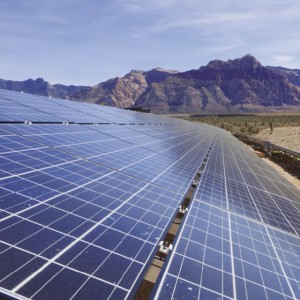 According to SEIA, solar PV systems have life expectancies of upwards of 30 years. However, even if the panels are guaranteed by the manufacturer to last that long, what about the rest of the components that make your solar array work?
According to SEIA, solar PV systems have life expectancies of upwards of 30 years. However, even if the panels are guaranteed by the manufacturer to last that long, what about the rest of the components that make your solar array work?
We looked at the different warranties offered by typical solar array components to help you gauge the expected lifetime of your solar installation. Warranties don’t necessarily equal life expectancy, but they are a good place to start estimating.
Panels
Solar panels typically come with 25-year performance warranties and 10- to 12-year limited warranties. Performance warranties guarantee that the power output will decline at a rate set by the manufacturer–usually about 0.7% each year. By the end of year 25, the output should be no less than about 80% of the labeled power output.
Batteries
Batteries used in solar arrays come with a wide range of warranties. Deep-cycle lead acid and AGM batteries are on the low end of the spectrum, with some manufacturers offering a one-year limited warranty. Lithium-ion and redox-flow battery manufacturers offer longer warranties, as much as 20 years.
Inverters
Inverter warranties vary with the different types of inverters.
Central inverters typically come with five-year limited warranties. String inverters promise a longer lifespan, with warranties of about 10 years. And microinverters come with by far the longest warranties, as much as 25 years.
Mounting
Solar mounting warranties also vary widely, from five to 25 years, likely because of the range of materials used to make them and other differentiating factors (such as whether it’s tracking or roof- or ground-mounted). Because of all the variables, pinning down the lifetime in general is difficult.
O&M
Appropriate maintenance can help extend the life of your solar array. There are four types of maintenance that can be offered, according to the National Renewable Energy Laboratory:
Administration maintenance: Establishing budgets and securing funds for preventative maintenance, corresponding with customers, record-keeping, reporting on system performance and O&M program efficacy.
Preventative maintenance: Scheduling maintenance checks to conform to manufacturer recommendations as required by equipment warranties. Frequency of preventative maintenance is determined by equipment type, environmental conditions and warranty terms.
Corrective maintenance: Required to repair damage or replace failed components. Less urgent corrective maintenance tasks can be combined with scheduled, preventative maintenance tasks.
Condition-based maintenance: Using real-time information from data loggers to schedule preventative measures like cleaning. Anticipating failures or catching them early.
Although component warranties may be less than 30 years, if you do your homework before the installation and perform maintenance throughout its lifespan, you can ensure a long life for your solar array.





What about the extra cost to have them reinstalled on your roof when you need a new roof or roof repair. I assume a lot more cost because you would need an electrician and permits as well as roofers.
Some good information but you don’t go into what has to be done after 30 years. Where do the old panels go? Is the land polluted? Can it be used as farmland again or is it taken out forever? What is the cost to get it back to farmland? How much landfill space will be used up?
I was impressed with the info and was beginning to feel good about solar until I saw that the author was the senior editor of Solar Power World. To me, that is like asking a used car salesman about the quality of a car he is trying to sell.
Sir, this is a news website. Our jobs are to write about solar. Would you rather have a food and wine editor write about the life expectancy of solar?
Low load on solar inverter will increase the lifespan of solar batteries
A long lifetime of doing nothing? Sounds like stupidity to me.